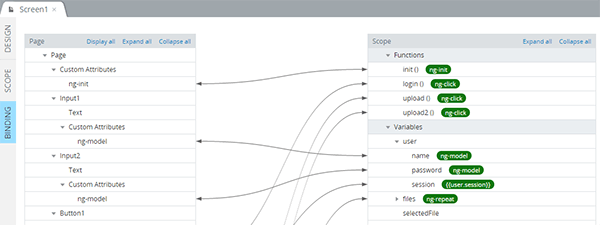Mobile Dev. Tip: Quickly Map Data Between Services and UI Using Visual Mapping and Binding Editor in AngularJS Apps
There are two powerful and convenient ways to use data flow management in Appery.io: Mapping and Binding.
Mapping
When a REST service is invoked, it usually requires input data. In most mobile apps, the data comes from the page (user-entered) or from storage (previously saved). When the service is invoked, it returns the data you want for further actions with it. This is when Mapping comes really handy — you can map input and output data via a simple and intuitive drag&drop system. You can also modify the incoming and outgoing data on-the-fly by adding custom JavaScript to a needed element.
Binding
AngularJS apps support automatic data synchronization between the model and view components. When the model changes, the view reflects the change, and vice versa. It’s called data-binding. Appery.io provides Binding — the visual tool for managing the connections between UI components and scope. By going to the BINDING tab you can see an overview, and add or remove connections via the simple drag&drop system.
Make sure to check out all of our mobile development tips.
Do you want to build apps fast? Start developing with our free plan.





